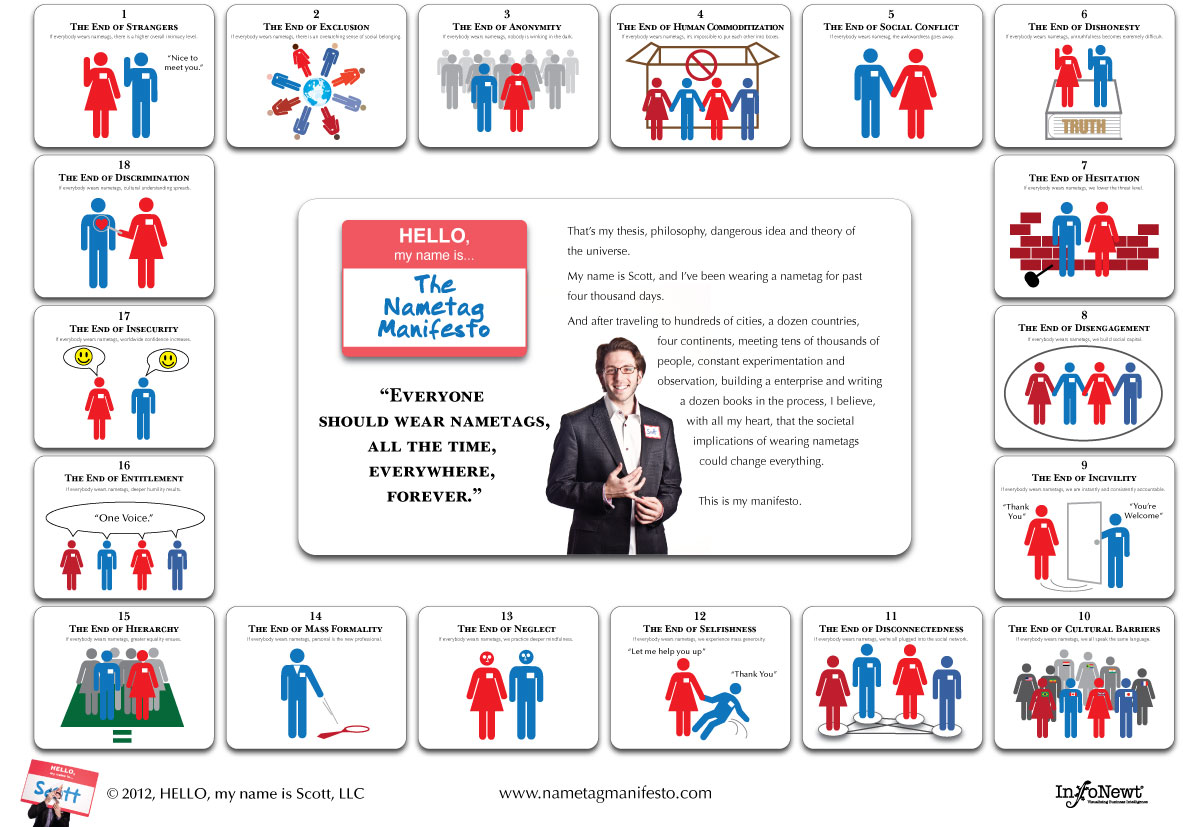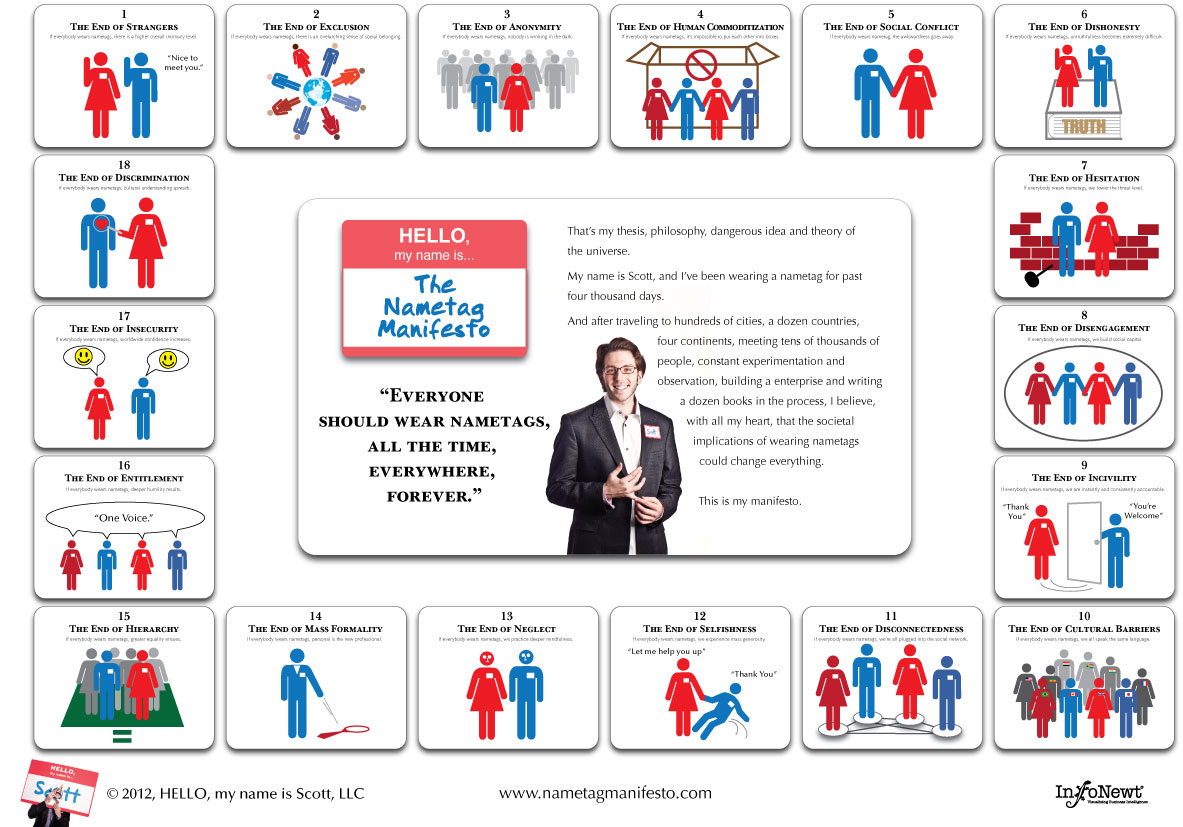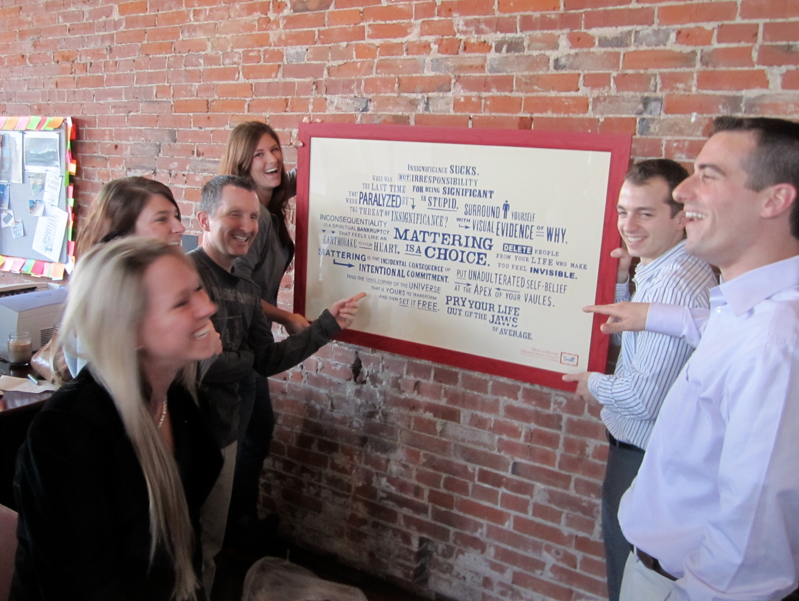 You’ve chosen an uncertain path.
You’ve chosen an uncertain path.
You’ve adopted an inconvenient lifestyle.
You’ve embarked upon an unconventional journey.
You’ve felt the voice inside you growing more urgent.
You’ve committed yourself enough so you can’t turn back.
IN SHORT: You’ve decided to play for keeps.
This is the critical crossroads – the emotional turning point – in the life of every young artist.
I’ve been there myself, and here’s a list of suggestions to help you along the way:(Read part one here, part two here, part three here, part four here, part five here, part six here, part seven, part eight, part nine, part ten and part eleven.
1. Artists are gift givers. Everyday I write what I write without knowing if someone is going to pay for it. Sometimes they do, sometimes they don’t. But while money is nice, part of being an artist is accepting payment in the form of how your art changes people.
That’s what gifts do. And as I learned from Linchpin, if your art is a gift so valuable that nobody could adequately repay you, people will be eager to pay for the privilege of being in the room with you.
That’s the bet a creator makes, says Seth Godin. That when you give away something for free, it will be discovered, attract attention, spread and then lead to some portion of the masses actually buying something. But it has to start with the gift. With the intention of deploying your work because it makes you happy. Are you making art to make money or make meaning?
2. Editing is for amateurs. Joyce Carol Oates once wrote that editing a book was like having multiple abortions. Jack Kerouac once wrote that editing was a betrayal of your own thoughts. And Henry Miller once wrote that editing leads to overcooked language.
All three are accurate. Editing is the enemy of expression. It forecloses on your creativity’s full expression. And it leaves your artistic spirit timid and impotent.
Don’t save your opinion for later. Risk at every moment all that you have. And make no restrictions on your testimony. You know the voice you most want to be quiet? Give it a megaphone. Because while sabotage is a safe place to be, the only art that matters is the work coated in blood that reflects people’s realities right back to them.
Make your art raw, bloody and honest. Keep it in the cross-hairs of your heart. Otherwise the red pen will own you. Where are you afraid to express yourself?
3. Maintain artistic perspective. A few sobering thoughts about three famous artists. First, Leo Tolstoy. He had thirteen kids when he wrote War & Peace. What’s your excuse for not creating? Second, Bill Gates. He started Microsoft in a recession. Are you still waiting for the economy to get better? Third, Rodney Dangerfield. He was an aluminum siding installer. What do you need to quit so you can focus on your art?
History is ripe with stories just like these. And if you want to keep things in perspective – especially during the low times – it’s helpful to remind yourself that you’re not alone. That you’re not the only one who’s terrified. And that you’re not the only artist who feels like your entire goddamn career is a hopeless journey.
Use the past to keep the future alive. Do you really thing you’re the first person who thought about quitting?
4. Find your artifact. Records aren’t dead. People don’t want the song, they want a magical way to remember the music that they can own and treasure forever. That’s why digital will always fall just short of art’s full potential. People love stuff. Stuff that changes and inspires them. Stuff they can show to their friends that inspires and changes them too.
The challenge is creating a unique way to extend the influence of your art with an artifact. As a consultant and facilitator, I create identity collages for my clients. These handmade woodcarvings, or brandtags, memorialize the company’s mission into a limited edition art piece. When hung, it becomes an engaging, conversation starting social object that makes people think, blink and share with each other. What souvenir are you providing for the viewers of your art?
5. Always keep kindling handy. Art is more than just what you do – this stuff has to be your life. If you don’t think what you’re creating is the greatest thing that ever was, you’re finished. If you don’t think your art matters in a massive way, you’re finished. And if you don’t think your work is going to change the world forever, you’re finished.
The key is to find private strategies to keep up your original enthusiasm. Two questions I’ve found helpful to ask are, “What injustice did you set out to fight when you first started?” and “What was the impulse that initially got you excited you about what you do?”
Those aren’t questions – those are time machines. And they work. If you want to stay up, stay true and stay fueled, you have to constantly rekindle that original fire. Otherwise your passion will degenerate into a line item. How do you replenish your energy reserve?
6. Paint with the brush of persistence. I didn’t invent the nametag. But I certainly took it farther than anyone expected it could go. And now that word is mine. I own it. Forever. And the people who meet me will never think about it the same way again.
That’s an example of what steady work can finally produce. And the cool part is, you don’t have to be the best – you just have to refuse to go away. The problem is, the odds are stacked against you. Because of our instant gratification culture, we’re impatient. And because of our abundance of choices, we’re quick to quit and pursue something better.
But at the heart of all creative badassery is stick-to-itiveness. If you can get good at not going away, the weak will weed themselves out. And only you and your art will remain. Are you quitting because it’s hard or because it’s right?
REMEMBER: When you’re ready to play for keeps, your work will never be the same.
Make the decision today.
Show the world that your art isn’t just another expensive hobby.
LET ME ASK YA THIS…
Have you committed with both feet yet?
LET ME SUGGEST THIS…
For the list called, “52 Random Insights to Grow Your Business,” send an email to me, and you win the list for free!
* * * *
Scott Ginsberg
That Guy with the Nametag
Author, Speaker, Publisher, Artist, Mentor
[email protected]
 Never the same speech twice.
Never the same speech twice.
Now booking for 2011-2012!
Watch The Nametag Guy in action here!

 My job is to help companies make their mission more than a statement, using limited edition social artifacts.
My job is to help companies make their mission more than a statement, using limited edition social artifacts.
 “Acts of friendliness in moments of anonymity.”
“Acts of friendliness in moments of anonymity.”
 I’m no futurist.
I’m no futurist. “I usually refuse to pay for mentoring. But after Scott’s first brain rental session, the fact that I had paid something to be working with him left my mind – as far as I was concerned, the value of that (and subsequent) exchange of wisdom and knowledge, far outweighed any payment.”
“I usually refuse to pay for mentoring. But after Scott’s first brain rental session, the fact that I had paid something to be working with him left my mind – as far as I was concerned, the value of that (and subsequent) exchange of wisdom and knowledge, far outweighed any payment.” Love people until they ask you why.
Love people until they ask you why. “I usually refuse to pay for mentoring. But after Scott’s first brain rental session, the fact that I had paid something to be working with him left my mind – as far as I was concerned, the value of that (and subsequent) exchange of wisdom and knowledge, far outweighed any payment.”
“I usually refuse to pay for mentoring. But after Scott’s first brain rental session, the fact that I had paid something to be working with him left my mind – as far as I was concerned, the value of that (and subsequent) exchange of wisdom and knowledge, far outweighed any payment.” Everything costs something.
Everything costs something. Not everyone is looking for an answer.
Not everyone is looking for an answer. “I usually refuse to pay for mentoring. But after Scott’s first brain rental session, the fact that I had paid something to be working with him left my mind – as far as I was concerned, the value of that (and subsequent) exchange of wisdom and knowledge, far outweighed any payment.”
“I usually refuse to pay for mentoring. But after Scott’s first brain rental session, the fact that I had paid something to be working with him left my mind – as far as I was concerned, the value of that (and subsequent) exchange of wisdom and knowledge, far outweighed any payment.” You’ve chosen an uncertain path.
You’ve chosen an uncertain path.
 My job is to help companies make their mission more than a statement, using limited edition social artifacts.
My job is to help companies make their mission more than a statement, using limited edition social artifacts. When you put the cart before the horse, it’s impossible to make progress.
When you put the cart before the horse, it’s impossible to make progress.  “I usually refuse to pay for mentoring. But after Scott’s first brain rental session, the fact that I had paid something to be working with him left my mind – as far as I was concerned, the value of that (and subsequent) exchange of wisdom and knowledge, far outweighed any payment.”
“I usually refuse to pay for mentoring. But after Scott’s first brain rental session, the fact that I had paid something to be working with him left my mind – as far as I was concerned, the value of that (and subsequent) exchange of wisdom and knowledge, far outweighed any payment.” Anytime you dare to descend down the unknown path, certain elements will always be at work.
Anytime you dare to descend down the unknown path, certain elements will always be at work.